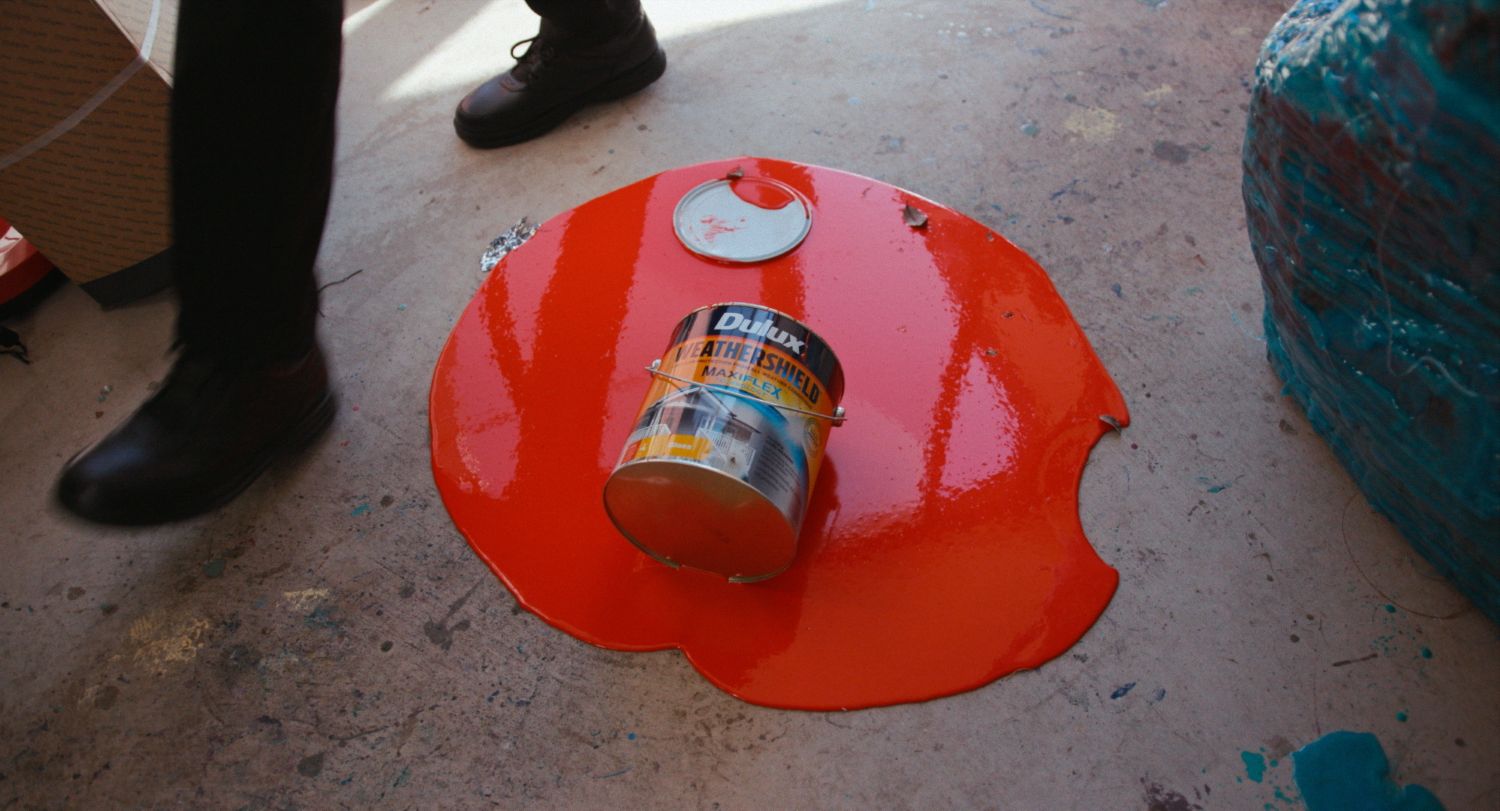by Julian Wood
Worth: $18.00
FilmInk rates movies out of $20 — the score indicates the amount we believe a ticket to the movie to be worth
Cast:
Dale Frank, Roslyn Oxley
Intro:
... skilful ...
For those enthralled by art, a certain fascination with the people who produce it, is inevitable. The history of art criticism is forever debating the issue of whether you need to know the life to understand the work or vice versa. This conundrum is a major part of the appeal of director Jenny Hicks’ skilful portrait of the elusive Australian painter Dale Frank.
There is another paradox in play, what if the art is beautiful, but the creator less so? Frank certainly doesn’t set out to charm anybody and he doesn’t even seem to particularly want a film made about him. Hicks must have been persuasive as well as persistent. This, despite the fact that Frank grasps intuitively that if you want to make enough money to live off your daubs, you need to be pretty good at self-promotion or cozy up to those who can. Frank has been pretty good at that in one way or another and there is no doubt that he is ‘major’ as his auction prices (though never actually specified here) attest.
Frank was also lucky to form a relationship early with Roslyn Oxley, the redoubtable gallerist whose little white cube in Sydney’s Paddington has, for decades, been a pivotal place on the fine art circuit. Oxley and her partner Tony feature quite a lot here, swanning around with the buyers and hangers-on at the wine and cheese openings and, more revealingly, jousting with the somewhat infuriating Frank, when deciding on the huge canvases to show. Teams of patient packing room men carry them around as the creatives decide which must hang next to which. Hicks must have earned the trust of all involved because she is allowed fly on the wall access to these backroom scenes, and they are not only funny but quite revealing of both the mechanics of exhibiting and the personalities involved.
To return to the man, Frank himself is a very good subject for a doco, or perhaps an anti-doco. Once Hicks had stumbled upon him, she must have known that she was tapping into documentary gold. He lives in a huge mansion somewhere in the Hunter Valley, where we see he has whole rooms devoted to his eccentric and expensive hobbies. One long green room is lined with a menagerie of exotic stuffed animals, which Frank boasts is one of the largest collections of taxidermy of its kind. And then there is the garden, Frank collects ‘rescue trees’, things like giant mature palms with which he landscapes the surrounds. He is hands-on, actually pitching in to add to the holes that his team of gardeners and labourers have made. This probably isn’t a good idea as he smokes 24/7 and seems to live off tumblers of scotch. You get the feeling that the problem is also the cure here. Frank is in pain and booze is the palliative.
The filmmaker herself stays resolutely beyond camera, provoking the bear with the occasional pointed question which he is quite capable of meeting with a snort of contempt. The elephant in the room here is that Frank had finally been diagnosed as autistic. This revaluation made all the pieces fall into place. He tells us that it explains so much about why he can’t sustain relationships (though the private life was off limits in the film, he did have marriages, plural), and also why he soon spurned the school that had spurned him to strike out and become a full time artist. He went to Europe and soaked up its influences like a sponge.
Finally, and perhaps most importantly for an art documentary, there are the paintings themselves and, interwoven with that, the art making. Frank has been extraordinarily prolific (as he needs to be with the famous palms costing upwards of $60,000 a pop). We see lots of footage of the artist working interminably with his small, trusted crew as they pour on resins and thickened paints and tilt the giant canvases to make his trademark abstractions. Hicks wisely gives us plenty of finished examples to look at and some of them are very beautiful. You can even imagine living with one on your wall (if you had the dough). Abstract art has a long and rather self-conscious lineage but, in the end, the work has to speak for itself. Beauty is truth, truth beauty as the poet said.




